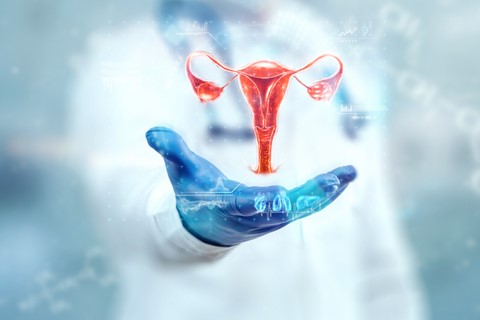
Hysteroscopy is the diagnostic procedure used to diagnose or treat problems of the uterus. A hysteroscope, a thin, lighted telescope-like device is inserted through the vagina into your uterus. The hysteroscope transmits the image of your uterus onto a screen. Other instruments are used along with the hysteroscope for treating the abnormality.
Your doctor will use hysteroscopy to:
- Extract a tissue sample (biopsy)
- Remove the fibroids or tumors
- Prevent bleeding by destroying tissue using electric current, freezing, heat, or chemicals
Who is the right candidate for Hysteroscopy?
If you have any of the below condition your doctor would suggest for a hysteroscopy:
- Bleeding after menopause
- Abnormal uterine bleeding
- Repeated miscarriages
You may need hysteroscopy for:
- Abnormal Pap test results
- Removal of a small tissue sample (biopsy)
- Removal of endometrial lining
- Place small birth control inserts into the fallopian tubes
- Removal of uterine scarring, polyps, or fibroids
What happens before hysteroscopy?
- Your doctor may perform a physical examination, blood tests and other diagnostic tests to check your overall health status.
- You must not eat anything before the procedure. You may have local or regional anesthesia or no anesthesia. This depends on what other procedures your doctor will do at the same time.
- Your doctor will administer a sedative before the procedure to help you relax. If so, you will need someone to drive you home.
- Your doctor will schedule a particular day for the procedure either after your period and before ovulation. This helps to get the best view of the uterus. It also avoids harm to a new pregnancy.
What happens during hysteroscopy?
During hysteroscopy the following steps are usually done:
- An intravenous (IV) line may be put in your arm or hand for administering IV antibiotics or fluids
- Your vaginal area will be cleaned with an antiseptic solution, your doctor would dilate your cervix before inserting the hysteroscope.
- Your doctor will insert the hysteroscope into the vagina, through the cervix, and into the uterus. The detailed pictured of uterus is captured and the tissue if needed for biopsy will be collected.
- If you need a procedure, such as fibroid removal, your doctor will insert tools through the hysteroscope.
For more complex procedures, your provider may insert another type of scope through the belly (laparoscope) to view the outside of the uterus simultaneously.
The hysteroscope is removed once the procedure is done.
What happens after hysteroscopy?
- You can go home the same day after the procedure. If you had general anesthesia, you may need to wait until its effects have worn off.
- It is normal to have some mild cramping or a little bloody discharge for a few days after the procedure. You may be given medication to help ease the pain. If you have a fever, chills, or heavy bleeding, call your health care professional right away.
What are the possible complications of hysteroscopy?
- Infection
- Bleeding
- Pelvic inflammatory disease
- Tearing of the uterus (rare) or damage to the cervix
- Complications from fluid or gas used to expand the uterus
You may have slight vaginal bleeding and cramps for a day or two after the procedure.


